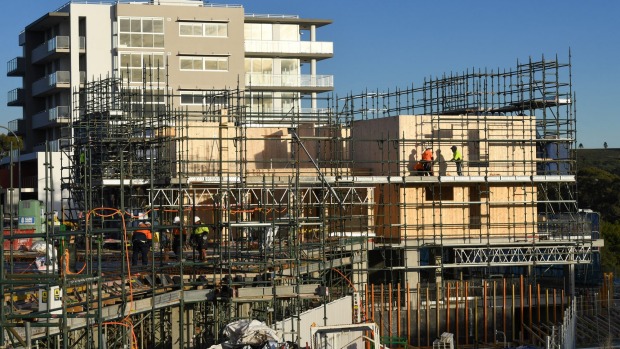Construction work dropped in the three months to March, which could have an impact on economic growth. The value of construction work done fell 0.7% in the March quarter to $46.4 billion, a slightly sharper fall than expected, and was down 7.2% in the year to March.
The biggest drag was housing construction, down 4.7% in the quarter, as developers put the brakes on residential projects, likely due to concerns of oversupply, AAP reported.
“Overall, construction fell further to the lowest level since 2011,” UBS economist George Tharenou said. “While the fall was largely as expected, the sharp retracement of housing was a negative surprise.”
National Australia Bank Tapas Strickland said that could have an impact on March quarter economic growth. “The topping out of apartment construction is an important element of the outlook for growth and interest rates as it has been a key driver of employment growth in the economy to date,” he said.
“Along with soft partial data to date, there is a real risk that Q1 GDP could print a flat or even a small negative outcome.”
There was a stronger-than-expected rise of 2.2% in engineering construction in the March quarter, the first increase for seven quarters. Economists said this possibly indicates some large public works projects in the eastern states are starting to offset the completion of mining projects.
The federal budget’s boost to infrastructure spending and home-building will give a lift to a construction industry facing a worse-than-expected slump by 2020.
The Australian Construction Industry Forum, which early this month predicted the loss of 166,000 construction jobs over the next three years as the double whammy of falling housing and engineering construction pushes the value of total construction down 14% from last year to $193.7 billion, said the federal budget’s $75 billion boost to infrastructure spending and moves to boost investment in affordable housing could ease that scenario.
It’s not all new money–the announcements included projects that were already factored into ACIF’s latest forecasts, including the second Sydney airport at Badgerys Creek, roads and the inland rail line connecting Brisbane and Melbourne. And the timing of new projects is still unclear. But the spending was likely to give a much-needed boost to an industry facing the prospect of both engineering and residential construction drying up at the same time, said Adrian Harrington, the chairman of ACIF’s construction forecasting council.


